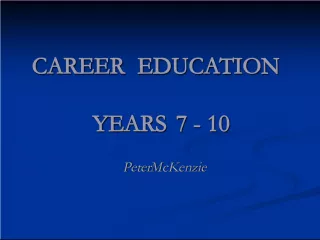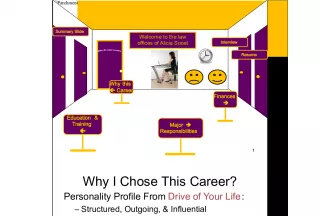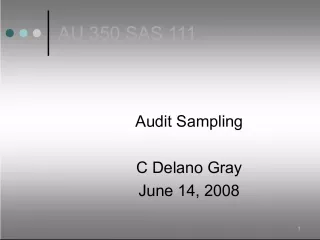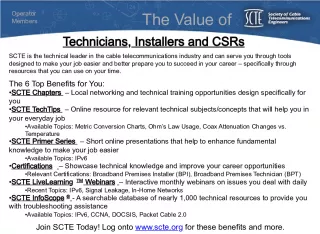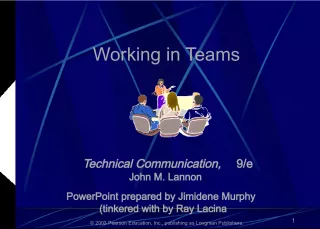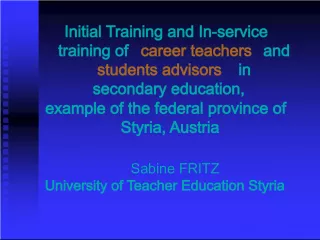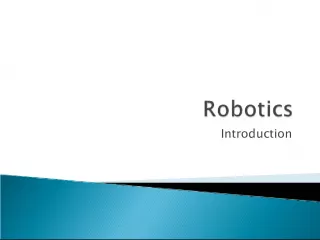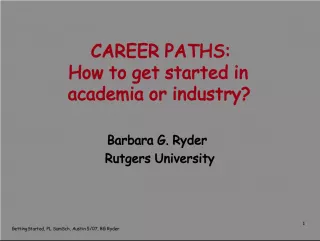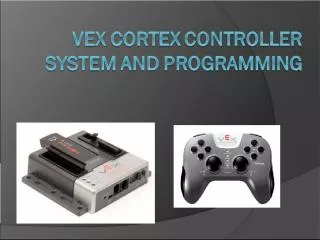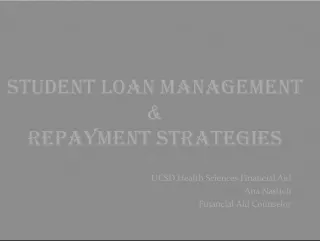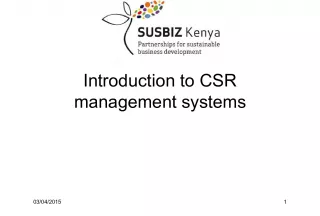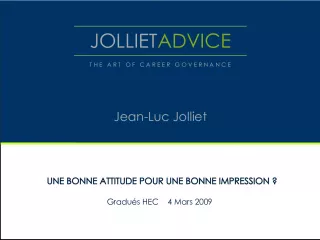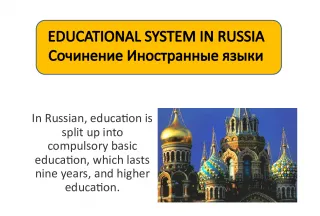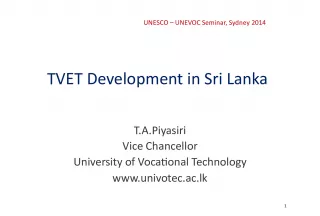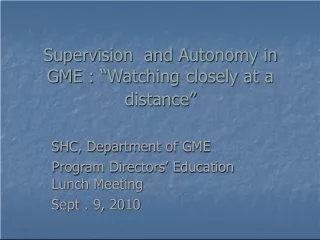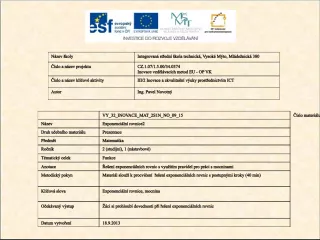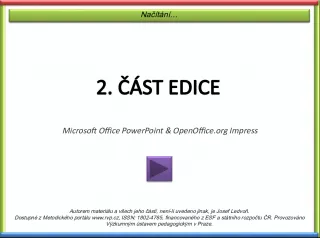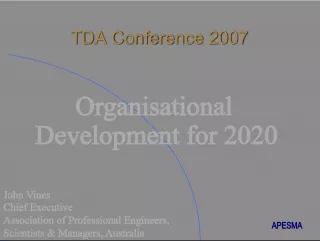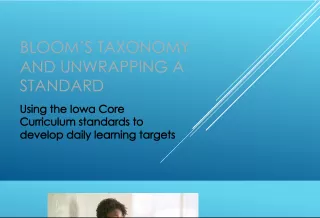Reinventing Career and Technical Education Standards


Dr. Danielle Mezera and Casey Haugner Wrenn lead the CTE Standards Reform Phase II, redefining what high-quality CTE education should look like. A fresh perspective on what unlocks student potential and workforce readiness.
- Uploaded on | 5 Views
-
 sandernielsen
sandernielsen
About Reinventing Career and Technical Education Standards
PowerPoint presentation about 'Reinventing Career and Technical Education Standards'. This presentation describes the topic on Dr. Danielle Mezera and Casey Haugner Wrenn lead the CTE Standards Reform Phase II, redefining what high-quality CTE education should look like. A fresh perspective on what unlocks student potential and workforce readiness.. The key topics included in this slideshow are . Download this presentation absolutely free.
Presentation Transcript
1. A New Look at Career and Technical Education (CTE) Standards CTE Standards Reform (Phase II) Dr. Danielle Mezera Casey Haugner Wrenn
2. A New Look at CTE Standards Objectives: • Understand the need for reform of current career and technical education (CTE) course standards to align to secondary, postsecondary and career opportunities • Articulate process used to determine revisions • Become familiar with objectives and results of new standards
3. CTE Standards Reform: Why now? Tennessee’s CTE: Robust, Aligned Academic/Career 7 th -16 th Learning Pathway Illustration by RSA Animate (2010)
4. CTE Standards Reform: Why now? Our thoughts and actions drive student outcomes • What we believe influences what we produce • What we produce influences what teachers do in the classroom • What teachers do in the classroom influences student success CTE Division • Thoughts and Beliefs • Actions CTE Teachers • Thoughts and Beliefs • Actions Student • Actions Student • Outcomes
5. CTE Standards Reform: Why now? We need to redefine student learning to meet the needs of today’s economy in Tennessee
6. CTE Standards Reform: Multi-Phased Approach Phase Goal Implementation Phase I Phase I Streamline our existing courses and programs of study Streamline our existing courses and programs of study 2013-2014 SY 2013-2014 SY Phase II Phase II Add relevant new courses and new programs of study, revise courses to align to higher student expectations Add relevant new courses and new programs of study, revise courses to align to higher student expectations 2014-2015 SY 2014-2015 SY Phase III Phase III Measure success of students with rigorous assessment options for all courses. Measure success of students with rigorous assessment options for all courses. 2015-2016 SY 2015-2016 SY Immediate Wins : Immediate Wins : Eliminate redundancies Eliminate redundancies Streamline for greater flexibility Streamline for greater flexibility Organize curriculum in POS using existing courses Organize curriculum in POS using existing courses Deeper Dive : Deeper Dive : Revise existing courses Revise existing courses Develop new courses Develop new courses Increase relevance of POS to reflect stronger alignment Increase relevance of POS to reflect stronger alignment Provide opportunities to measure student achievement using assessment options. Provide opportunities to measure student achievement using assessment options. 2013-14 2013-14 2014-15 2014-15 2015-16 2015-16
7. CTE Standards Reform: Phase I 2012 CTE Director Survey: 77% response rate from LEAs “I would like to drop POS that are not leading to employment/training in area after graduation and add other POS that may lead to post-sec training/ employment.” “ There are too many options under many areas...POS overlap and duplicate each other…Please reduce the amount of POS and allow for flexibility for districts.”
8. CTE Standards Reform: Phase I 2012 CTE Director Survey: 77% response rate from LEAs “POS needs to be aligned with 16 Career Clusters. Courses are the same in multiple pathways and do not reflect today's competitive business environment. Standards and competencies are too broad, vague, and often overlap… do not reflect professional organizations in business and industry.”
9. CTE Standards Reform: Phase I Results Four Specific Objectives: 1. Eliminate redundancy and misalignment of Programs of Study • Reduced POS by 67% from 207 to 69 for 2013-14 SY 2. Align remaining POS, and accompanying courses, with postsecondary offerings and industry needs • Inserted General Education courses • Removed more than 50 non-aligned or redundant courses 3. Provide more flexibility in the selection and sequencing of courses, particularly helpful for smaller, more rural School Districts • Added Work-Based Learning, provided options for capstone courses 4. Simplify the annual POS selection process ( Spring Open Enrollment )
10. Choose Your Pathway to Success Tennessee’s 16 Career Clusters STEM & STEM Across Industries Advanced Manufacturing Finance Business Management Education & Training Transportation Distribution & Logistics Architecture & Construction Arts, A/V Tech & Communications Government & Public Admin Human Services Information Technology Agriculture, Food & Natural Resources Hospitality & Tourism Law & Public Safety Health Science Marketing
11. CTE Standards Reform: Multi-Phased Approach Phase Goal Implementation Phase I Phase I Streamline our existing courses and programs of study Streamline our existing courses and programs of study 2013-2014 SY 2013-2014 SY Phase II Phase II Add relevant new courses and new programs of study, revise courses to align to higher student expectations Add relevant new courses and new programs of study, revise courses to align to higher student expectations 2014-2015 SY 2014-2015 SY Phase III Phase III Measure success of students with rigorous assessment options for all courses. Measure success of students with rigorous assessment options for all courses. 2015-2016 SY 2015-2016 SY Immediate Wins : Immediate Wins : Eliminate redundancies Eliminate redundancies Streamline for greater flexibility Streamline for greater flexibility Organize curriculum in POS using existing courses Organize curriculum in POS using existing courses Deeper Dive : Deeper Dive : Revise existing courses Revise existing courses Develop new courses Develop new courses Increase relevance of POS to reflect stronger alignment Increase relevance of POS to reflect stronger alignment Provide opportunities to measure student achievement using assessment options. Provide opportunities to measure student achievement using assessment options. 2013-14 2013-14 2014-15 2014-15 2015-16 2015-16
12. CTE Standards Reform: Phase II 2013 CTE Teacher Survey: Over 540 responses Typical feedback included: • Standards are too general and redundant from course to course • Programs of study need to be better aligned to needs of industry • Increase work-based learning opportunities • Identification of gap areas needed by employers not covered in current course standards
13. CTE Standards Reform: Phase II Objectives Four Specific Objectives: 1. In-depth revision of Programs of Study (POS) • Addition of new POS in identified gap areas • Greater cross integration between Career Clusters and General Education and EPSO Courses • Strong attention to and infusion of relevant Work-Based Learning 2. Full revision of standards in three Career Clusters • Agriculture, Food, & Natural Resources; Education & Training; and Human Services 3. Full revision of course standards in identified weak courses across multiple career clusters 4. Development of new courses to fill identified gap areas
14. General Education Career &Technical Education 21 st Century Skills Work- Based Learning Complex Texts DC/DE Project Based Learning CTSO Activities SAE Critical Thinking Team Work / Collaboration STEM Work Ethic Technology Fluency Technical Skill Attainment Math Courses ELA Courses Social Studies Courses Science Courses Common Core State Standards Phase II Standards / Instruction Assessments PD / Training Learning Environment Sequential Courses Communication Skills Writing Prompts Industry Certifications Career Cluster Programs of Study Problem Solving Creativity Citizenship Academic Learning Tennessee’s CTE: Robust, Aligned Academic/Career 7 th -16 th Learning Pathway
15. Phase II Standards Integration Turn and Talk: 1. What resonates with you about this graphic? 2. What steps could you take to promote this type of integrated learning in your building/system?
16. Project Management Project Management CTE Standards Reform: Process Overview Data Gathering & Research Data Gathering & Research Use labor and economic data to determine relevant pathways for Tennessee; examine and crosswalk current postsecondary offerings; gather stakeholder feedback on current course offerings Skills Identification & Alignment Skills Identification & Alignment Determine knowledge and skills (hard/soft) necessary for all identified courses and pathways. Reduce duplication in existing courses, identify gap areas Writing & Reviewing Writing & Reviewing Draft course standards to ensure logical building of knowledge and skills (hard/soft) throughout each pathway. Review revisions with critical stakeholders (teachers, industry, postsecondary) 1. Data Gathering and Research: Determine needs and opportunities of state and the strengths of existing CTE course offerings. 2. Skills Identification and Alignment: Determine specific knowledge/skills needed for students to be successful in identified courses and pathways. 3. Writing and Reviewing: Craft revised course standards and vet recommendations with key stakeholders. Collaborative process with external experts
17. CTE Standards Reform: External Support Initiated a collaborative and facilitative process that engaged external experts to supplement internal staff capacity and to build internal staff expertise Area of Expertise External Support Real time and lagging workforce and labor data interpretation Jobs for the Future (JFF) Cogitative demand in standards, framework for successful pathways Educational Policy Improvement Center (EPIC) CTE content knowledge, standard writing and editing Center for Occupational Research and Development (CORD) Quality instructional practice Peabody College, Vanderbilt University Project management Thomas Gibney, independent contractor (embedded with staff)
18. CTE Standards Reform First Step: Data Gathering & Research CTE Consultants researched and collected data from multiple measures and stakeholders: • Regional, State, National labor and economic development data (lagging and real-time) • Statewide CTE teacher survey on existing courses and standards (540+ teacher respondents) • Industry Advisory Councils • Curriculum scans from other states, endorsed professional organizations, and accrediting bodies
19. CTE Standards Reform First Step: Data Gathering & Research Example: Agriculture • Workforce Data: – Job postings and state supply/demand trends showed increases in veterinary science, agriculture engineering, and food production and processing • Statewide CTE teacher survey 540 + responses, of which 50 were Agriculture teachers • Industry Advisory Councils: Agriculture Council, “Team Ag Ed,” TN Farm Bureau Federation Recommendation Recommendation Responses Responses Provide opportunity for course flexibility 41% Reduce the number of pathways 33% Course s tandards are too basic, should have more rigor 20% Course topics are too specific, need more general preparation pathways 16% Other comments (combined) 20%
20. CTE Standards Reform First Step: Data Gathering & Research Example: Agriculture Curriculum Scans: – Special Course Requests submitted by TN school districts – Other State Agriculture Offerings: Georgia, Florida, Oklahoma, Colorado, Michigan, Wisconsin, North Carolina, Indiana, California – Postsecondary Agriculture Offerings: Reviewed 26 postsecondary agriculture programs, including top 10 national programs (i.e. Purdue University, Texas A&M, Cornell University) and all Tennessee offerings – National Agriculture Content Standards published by the National Council for Agricultural Education
21. CTE Standards Reform: Second Step: Skills Identification & Alignment CTE Consultants culled and synthesized data into the following actions: • Identified Programs of Study (POS) with weak postsecondary and industry alignments • Identified academic and skills (hard/soft) gaps in existing courses • Identified duplicate standards across existing courses • Created “groupings” of knowledge and skills needed for each stage of a pathway/POS – building progressively and sequentially by course
22. CTE Standards Reform: Second Step: Skills Identification & Alignment Example: Agriculture Created sequences of courses (Programs of Study/Pathways) to align with labor and economic data and postsecondary offerings: Sampling – Developed new program of study/pathway in Food Science – Recommended changes to Agriculture Engineering to address new opportunities – Outlined necessary skills (hard/soft) in “key content areas,” building progressively through courses/programs of study – Identified and aligned successful work-based learning and dual credit/dual enrollment opportunities
23. CTE Standards Reform: Third Step: Writing & Reviewing CTE Consultants revised course standards: • Infused revised standards from other existing CTE courses • Embedded stronger technical skills • Aligned developed and revised course standards with Common Core State Standards for Literacy in Technical Subjects (and Math where applicable) • Aligned and referenced general education standards (e.g. Biology), where applicable Stakeholders reviewed draft standards and provided critical feedback: • 78 CTE Tennessee teachers across multiple subjects – Average of 13.5 years of experience – Representing: East (34%), Middle (41%), and West (25%) • Professional CTE Teacher Associations • Other TDOE divisions • Industry Advisory Councils and Individual Companies • 22 Postsecondary Faculty and Teacher Prep Faculty
24. CTE Standards Reform: Third Step: Writing & Reviewing Example: Agriculture Stakeholders reviewed draft standards and provided critical feedback: – Engaged 29 secondary and 6 postsecondary Agriculture teachers – Tennessee Association of Agriculture Educators (TAAE), Ag teacher preparation representatives, and Agriculture Advisory Council – Curriculum & Instruction Division reviewed science content alignment – Tennessee Department of Agriculture – Tennessee Farm Bureau Federation
25. CTE Standards Reform: Third Step: Writing & Reviewing Example: Agriculture Feedback Excerpts Feedback Excerpts Resolution Resolution Reviewer Reviewer Agricultural electrification including low-voltage applications was not clearly addressed. Agricultural electrification language was added High School Agriculture Teacher Introduction to Agricultural Sciences (Middle School) should include seventh and eighth grade alignments. Added middle school general education standards references in literacy and science Middle School Agriculture Teacher Excellent Work! Veterinary and Animal Science Program of Study is very complete with high expectations. It will also give the teachers the flexibility needed to address different situations. Met with stakeholder - pledged support for work Tennessee Farm Bureau Federation The standards do comprise a well-developed program (Horticulture Science Program of Study). Students who are able to complete the four course sequence will experience related but not repetitive standards. Postsecondary faculty validated skills/knowledge necessary for pathway Horticulture Instructor, Walters State Community College
26. CTE Standards Reform: Course Standard Comparison Current : Plant and Soil Science 5.0 Analyze the chemical elements essential to plant nutrition and the importance and benefits of proper soil fertility. 5.1 Specify and explain terms related to soil chemistry and plant nutrition. 5.7 Measure soil pH and its effects on nutrient availability. 5.8 Assess the nutrient deficiency symptoms in plants. New : Plant and Soil Science 9. Assess the importance of the sixteen nutrients essential to plant growth and development. Identify nutritional deficiencies and disorders, distinguish among signs of nutrient deficiency in plants, make recommendations for appropriate treatments, and prescribe preventative control measures for major agricultural crops, including corn, soybean, cotton, tobacco, hay, pasture, and forest. (TN CCSS Reading 2, 5; TN CCSS Writing 2, 4, 9; TN Biology II 7) Career Cluster: Agriculture, Food & Natural Resources
27. CTE Standards Reform Course Standard Comparison Take 5 minutes to read through the excerpt standards on your handout. Then turn and talk to your neighbor to answer the following questions: 1. What are the differences in the two sets of standards? 2. What are the benefits of the revised course standards? 3. What are implications of the changes for teachers and administrators at the local level?
28. CTE Standards Reform: What does a pathway look like? High School Program of Study (Advanced Manufacturing Career Cluster) High School Program of Study (Advanced Manufacturing Career Cluster) Technology College (Industry Certification) Technology College (Industry Certification) Mechatronics Engineer $82,440 Community College (A.A./A.S) Community College (A.A./A.S) Mechanical Engineering Technician $50,660 University or College (B.A./B.S) CNC Operator $35,580 High School Program of Study (Agriculture Career Cluster) High School Program of Study (Agriculture Career Cluster) Technology College (Industry Certification) Technology College (Industry Certification) Veterinarian $125,300 Community College (A.A./A.S) Community College (A.A./A.S) Veterinary Tech $37,000 University/College Advanced Degrees University/College Advanced Degrees Vet Assistant / Lab Caretaker $30,200
29. CTE Standards Reform: Revised, New, Retired Courses Example: Agriculture Updated Course List* List of Existing Courses used in Development of Revised CTE Courses New: Advanced Food Science LEA Special Course (Meat Science) Agricultural Business and Finance Agricultural Business/Finance Agricultural Economics Agricultural Power and Equipment Agricultural Power and Equipment Agricultural Engineering Agriscience Agriscience Principles of Horticulture Sciences Principles of Agricultural Sciences *This List is not exhaustive, rather it is to show example of how former courses influenced revisions. Green = New course; Blue = Retired course; Black = Revised course
30. CTE Standards Reform: Next Steps Communications • Teacher Associations: Ongoing • Subject Area Teachers: Ongoing • School Counselors: Oct. & Feb. • Postsecondary teacher prep programs: Oct. • Superintendents Study Councils: Oct.-Jan. & Ongoing • CTE Directors: Ongoing • Principals: Ongoing Meetings & Training • Fall CTE Director Meeting: Sept. • State Board of Education Meeting: Oct. • Public commentary on course standards • LEAD Conference: Oct. • Town Hall meetings: Nov.-May • Webinars: Nov.-May • State Board of Education Meeting: Jan. • Public commentary on course standards • Regional visits and Workshops: Nov.-Ongoing • Teacher Professional Development: Nov.-Ongoing • Winter CTE Director Meeting: Feb. • School Counselors Conference: Feb. • Spring CTE Director Meeting: April • CTE Summer Institute: July Activity Sept. Oct. Nov. Dec. Jan. Feb. March April May June July Communications State Board of Education Meeting Teacher Training CTE Director Training Program of Study Release
31. A New Look at CTE Standards Objectives: • Understand the need for reform of current career and technical education (CTE) course standards to align to secondary, postsecondary and career opportunities • Articulate process used to determine revisions • Become familiar with objectives and results of new standards
32. A New Look at CTE Standards For questions: Dr. Danielle Mezera Casey Haugner Wrenn Danielle.Mezera@tn.gov Casey.Haugner@tn.gov Course input and feedback: CTE.Questions@tn.gov http://www.state.tn.us/education/cte/
